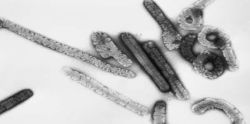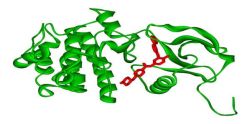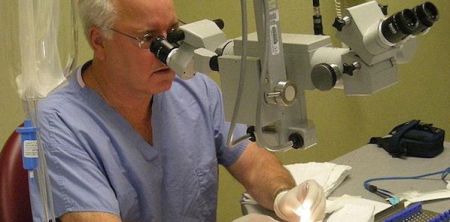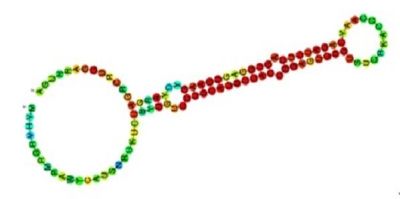Researchers from the Weizmann Institute of Science (Rehovot, Israel) have developed a powerful technique to focus laser light through even the densest of surroundings without using fluorescent proteins as “guide stars”, which are often invasive and provide little clarity.
The technique makes use of a special version of an adaptive optics microscope that can resolve a point less than one-thousandth of a millimetre across, by carefully targeting the light going in on the intended spot, according to a Medical Daily report.
Study of biological samples is not easy as researchers and scientists have to look through a microscope to observe layers of tissues, which may be surrounded by a lot of other material. The image seen may often be blurred or distorted, even if the microscope uses a guide star.
"Imagine shining a flashlight through a thick fogbank to try to see a single dot," said Yaron Silberberg, from the Weizmann Institute. "The light would become so scattered as it travelled through the fog that you wouldn't be able to make out what was hidden inside.” That is the same situation faced by scientists trying to observe diseased tissues or biological samples — it is like they are looking for a tiny dot in a dense fog, said Silberberg.
A paper describing this new innovation has been published in the Optical Society's (OSA) new journal Optica.
Wavefront Shaping Approach
The work involved fitting a standard two-photon scanning microscope — one that uses bursts of laser light to build up a picture point-by-point and then line-by-line — with a high-resolution wavefront shaping device. This allows the microscope to peer through layers that would otherwise blur the image, the research team explained.
The wavefront shaping method is based on "adaptive optics,” which is widely used in astronomy and also medicine. When used for taking telescopic images from the Earth, this method corrects the distortions caused by the Earth’s atmosphere and produces sharp images, similar to images captured in space, said the research team.
Adaptive optics has its limitations, though, and cannot correct severe distortions, such as the scattering by fog or imaging through the shell of an egg. As wavefront shaping has overcome even this limitation, this method delivers high-contrast images even through the thickest visual barriers, the researchers said.
In biology, guide stars are fluorescent proteins that have to be first implanted into the specimen. However, doing this may cause inadvertent damage to the tissue and render it useless. Silberberg et al. succeeded in creating guide-star free imaging by using a standard laser scanning two-photon microscope to focus in on a single point behind an obscuring scattering layer.
Light pulses from the laser are directed through the obscuring layer and onto a target. The microscope was able to focus in on a point about one-thousandth of a millimetre across. While other studies have shown that acoustic-based guide stars can also achieve such focusing, Silberberg et al. believe the images may not be as sharp as those produced using their technique.
"What we have discovered is that it's possible to efficiently 'pre-correct' the laser beam using the nonlinear fluorescence signal," noted co-author Ori Katz. "This produces a focused beam of light source."
The research team said that a more detailed study was needed to fine-tune this technique for practical purposes. Advancements will enable the imaging of complex layers such as those of embryonic development and guided laser surgery, they added.
Source: MedicalDaily.com
Image Credit: Wikipedia
The technique makes use of a special version of an adaptive optics microscope that can resolve a point less than one-thousandth of a millimetre across, by carefully targeting the light going in on the intended spot, according to a Medical Daily report.
Study of biological samples is not easy as researchers and scientists have to look through a microscope to observe layers of tissues, which may be surrounded by a lot of other material. The image seen may often be blurred or distorted, even if the microscope uses a guide star.
"Imagine shining a flashlight through a thick fogbank to try to see a single dot," said Yaron Silberberg, from the Weizmann Institute. "The light would become so scattered as it travelled through the fog that you wouldn't be able to make out what was hidden inside.” That is the same situation faced by scientists trying to observe diseased tissues or biological samples — it is like they are looking for a tiny dot in a dense fog, said Silberberg.
A paper describing this new innovation has been published in the Optical Society's (OSA) new journal Optica.
Wavefront Shaping Approach
The work involved fitting a standard two-photon scanning microscope — one that uses bursts of laser light to build up a picture point-by-point and then line-by-line — with a high-resolution wavefront shaping device. This allows the microscope to peer through layers that would otherwise blur the image, the research team explained.
The wavefront shaping method is based on "adaptive optics,” which is widely used in astronomy and also medicine. When used for taking telescopic images from the Earth, this method corrects the distortions caused by the Earth’s atmosphere and produces sharp images, similar to images captured in space, said the research team.
Adaptive optics has its limitations, though, and cannot correct severe distortions, such as the scattering by fog or imaging through the shell of an egg. As wavefront shaping has overcome even this limitation, this method delivers high-contrast images even through the thickest visual barriers, the researchers said.
In biology, guide stars are fluorescent proteins that have to be first implanted into the specimen. However, doing this may cause inadvertent damage to the tissue and render it useless. Silberberg et al. succeeded in creating guide-star free imaging by using a standard laser scanning two-photon microscope to focus in on a single point behind an obscuring scattering layer.
Light pulses from the laser are directed through the obscuring layer and onto a target. The microscope was able to focus in on a point about one-thousandth of a millimetre across. While other studies have shown that acoustic-based guide stars can also achieve such focusing, Silberberg et al. believe the images may not be as sharp as those produced using their technique.
"What we have discovered is that it's possible to efficiently 'pre-correct' the laser beam using the nonlinear fluorescence signal," noted co-author Ori Katz. "This produces a focused beam of light source."
The research team said that a more detailed study was needed to fine-tune this technique for practical purposes. Advancements will enable the imaging of complex layers such as those of embryonic development and guided laser surgery, they added.
Source: MedicalDaily.com
Image Credit: Wikipedia
Latest Articles
biological sample, fluorescent protein, laser, microscope, optics
Researchers from the Weizmann Institute of Science (Rehovot, Israel) have developed a powerful technique to focus laser light through even the densest of s...























